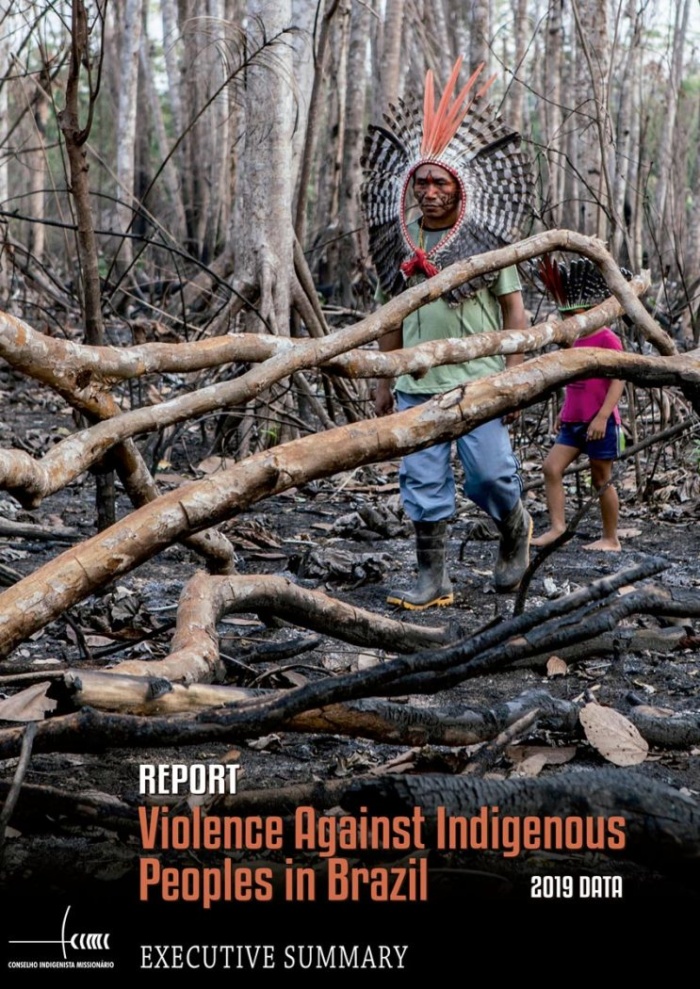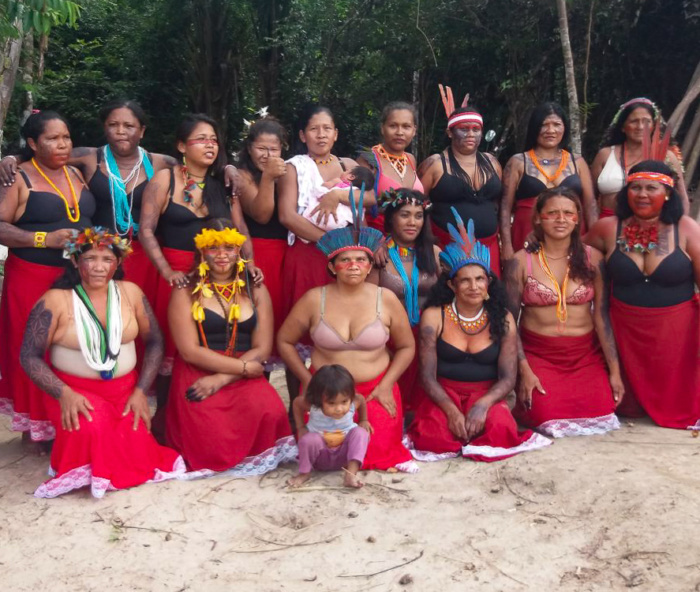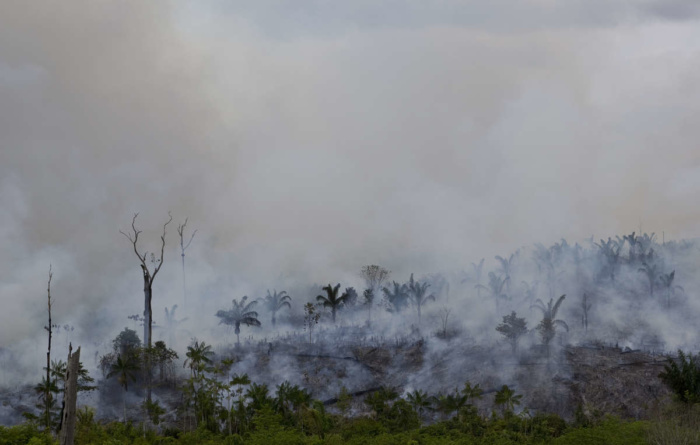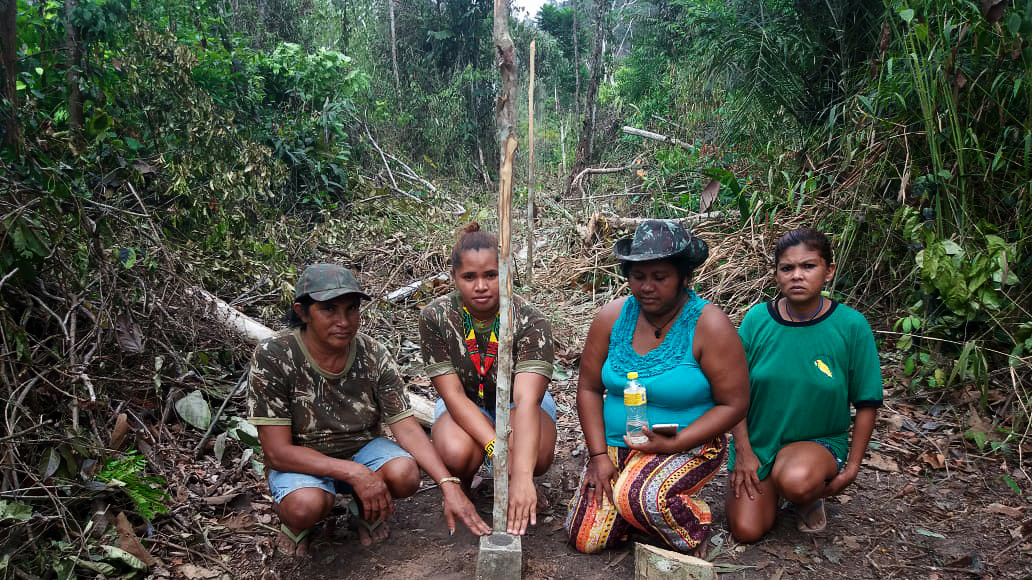A year ago, Paulo Paulino, a Guajajara Indian, was murdered, with the assassination reverberating around the world.
To mark the anniversary of his death, Fiona Watson, director of advocacy at Survival International and a member of LAB’s council, has written two articles.
In the first, she interviewed Paulino’s cousin Tainaky, who witnessed his death. In this second article, she describes the violence spreading across the state of Maranhão, where the Guajajara people live.

Maranhão is one of the most dangerous states to be indigenous in Brazil today. According to the NGO CIMI, 35 indigenous people were murdered here in the decade 2009 – 2019. Impunity is the norm and most killers of the 80 Guajajara murdered in the last 20 years have not been brought to justice.
Murders usually occur during conflicts with the logging mafias who are in cahoots with local politicians and police, and aggressively targeting indigenous territories because they have the last primary rainforests left in this eastern fringe of the Amazon. Part of these forests are unique pre-Amazon forest lying between the deep Amazon and savannas and contain many endemic plants and animals.
Other indigenous peoples in Maranhão such as the Ka’apor and the Awá and are also forming groups of ‘Guardians’ and they too are being killed. Kawxipuhu Ka’apor was murdered this July and his killers are on the loose.

Many tribal people see this frontline, active defence as their only option in Bolsonaro’s Brazil. His racist rhetoric is fuelling invasions of indigenous territories by people who feel empowered by his contempt for indigenous peoples, and by the weakening of federal agencies such as FUNAI (the indigenous affairs department) and IBAMA (the institute for environment and natural resources) which have had their budgets slashed and experienced field workers dismissed.
Indigenous women are on the frontline too and many have formed their own groups of ‘Guerreiras da Floresta’ – Forest Fighters. One of the first groups was set up in 2014. Its coordinator Marilene Guajajara says: ‘We are showing women’s strength in political arenas. Together, we women can add to the fight, protecting our territory and showing that we can be protagonists of our own history.’
According to Cícera Guajajara: ‘The first thing you must have to be a guerreira is love for your land, your community and for the cause, because this battle isn’t at all easy.’
The Arariboia territory is also home to a large group of uncontacted Awá, who shun all contact with outsiders including their Guajajara neighbours. They are at huge risk of catching common diseases like flu to which they have resistance as the invaders close in on them. According to the Socioenvironmental Institute (ISA), Arariboia was in the top five of most deforested indigenous territories as coronavirus pandemic began to spread earlier this year.
In October 2019 alone 105 kms of illegal roads were built clandestinely in the territory and there were 258 alerts about illegal extraction of hardwoods.
Fires cause catastrophic loss
Due in part to heavy logging the forest is very dry, and speculators often set fire to it help clear it for cattle pasture and plantations. In 2017 Maranhão recorded 18,000 fires, the highest number in seven years. Arariboia suffered a catastrophic loss of forest and fauna when the fires of 2015 destroyed 42 per cent of the territory.

Fires are raging elsewhere in the Amazon and savanna forests, as well as the wetlands of the Pantanal. Many have been started by loggers and land grabbers encouraged by President Bolsonaro’s rhetoric and his plans to halt the demarcation of indigenous territories and open them up to agribusiness and large-scale and placer mining. Several highly vulnerable tribes are at now at huge risk from fires burning on their land. Ângela Kaxuyana, spokesperson from COIAB, the Coordination of Indigenous Organizations of the Brazilian Amazon says: ‘Land grabbing, deforestation and arson directly threaten the lives of our uncontacted relatives. The destruction of the territories that are their only sources of life, from where they obtain their food (fauna, flora and water), could end in their extermination.’
APIB, the Association of Indigenous Peoples of Brazil says domestic and international demand for agri-business products such as soya and beef, as well as timber, gold and other valuable minerals is fuelling this devastation and is calling on companies not to trade products which result in the destruction of indigenous lands and lives.
Main image: Five years ago a group of 32 women took action to defend their land and preserve their culture in the Caru Indigenous Territory in Maranhão. Photo: Erisvan Guajajara/Amazônia Real
To take action click here.
To support the Guajajara Guardians, visit: https://www.survivalinternational.org/emails/guajajara_guardians

